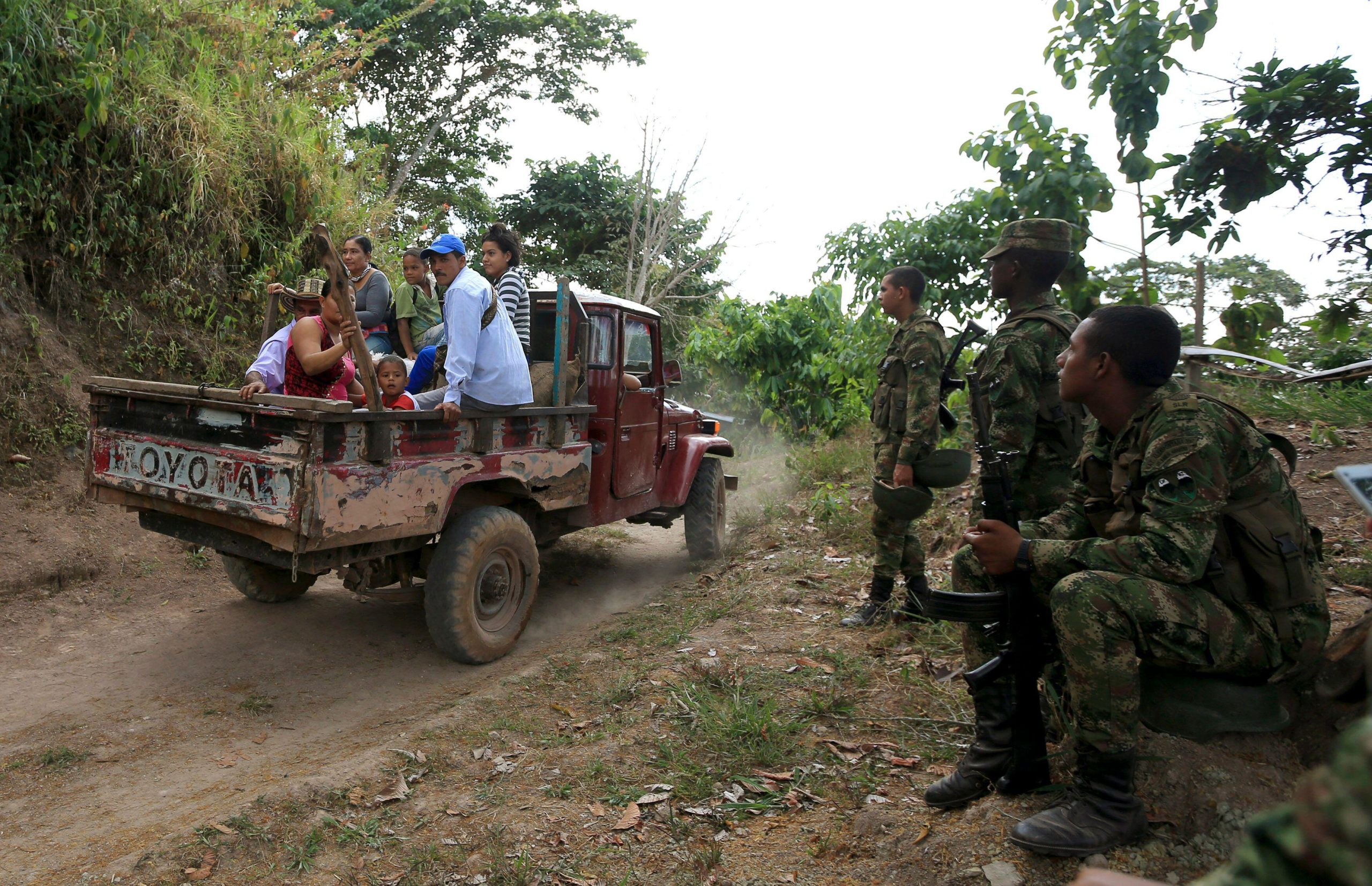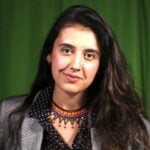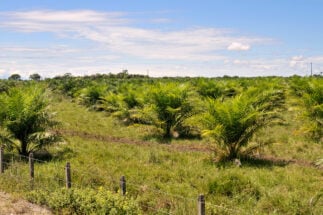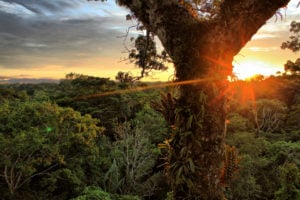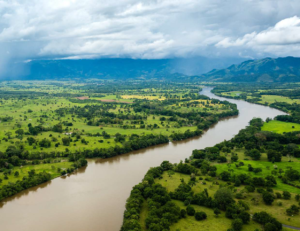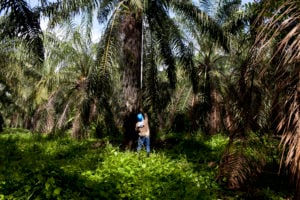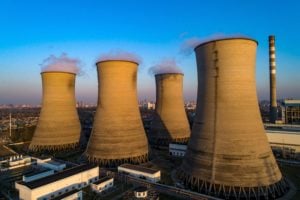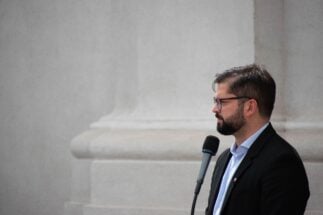On 15 December 2020, the Colombian government auctioned off nearly 200 kilograms of gold that former guerrillas of the Revolutionary Armed Forces of Colombia (FARC) had handed over to the country’s United Nations mission, in order to provide reparations to the victims of long-running conflict. However, beyond the US$11.9 million that the British firm Condor Partners paid for the ingots and jewellery, the auction highlighted a deeper issue: the role of natural resources in the emergence, duration and intensity of armed conflicts in Colombia.
Five decades of conflict
Colombia has experienced more than 50 years of complex, violent conflict involving the state, right-wing paramilitary groups, criminal gangs and revolutionary guerrillas, such as the demobilised FARC – whose splinter groups still operate – and the National Liberation Army, the last recognised guerrilla group.
Several Colombian researchers at the Universidad de los Andes in Bogotá had previously approached these dynamics, but from a different angle: not with the usual emphasis on drug trafficking – an illicit resource – as a fuel for conflict, but on the role of legal economic activities. Their 2018 study, entitled Different Resources, Different Conflicts?, aimed to contribute to “de-narcotising” the national agenda, as well as explaining why Colombia is a diverse “country of regions”, not only from a cultural and natural perspective, but also because of the differing forms that armed conflict and criminality have taken in different regions throughout its history.
A number of key questions arise at this intersection of conflict and natural resources, as the researchers sought to explore. Why do some regions – and some resources – seem to be able to “armour themselves” against the dynamics of conflict? What mechanisms mediate the relationships between certain resources and the dynamics of armed groups? What forms of victimisation have emerged – for example, assassinations, forced displacement, kidnappings or extortion? To answer these and other questions, the researchers focused on the cases of eight resources: bananas, coffee, coal, emeralds, ferronickel, flowers, gold and oil.
According to Angelika Rettberg, a professor in political science and a co-author of the book, this approach allowed for an understanding of how natural resources interact and can be interdependent.
“This forces us to look at the micro-level dynamics and saves us from permanent pessimism. Contrary to what some literature says about ‘cursed resources’ [those that become a headache for poor countries because they are related to political instability, looting and corruption], the real cursed resources are the particular contexts in which they are extracted,” she explains. “Where there are reasonably well-functioning institutions and communities that don’t have a predatory vision, these resources can work in a virtuous way.”
Framing conflicts in Colombia
The relationship between the eight resources analysed and armed conflict, the authors found, can exist in three different ways. A motivational relationship occurs when the presence of armed actors can be explained by the possibility of looting the resource. A complementary relationship is one when the looting of resources complements income for an armed group, but is not the main motivation; here, there may be an interest in controlling strategic corridors to move arms or supplies, for example. Finally, there are isolated relationships, where resources remain isolated or “shielded” from the dynamics of conflict.
66%
of alluvial gold exploitation in Colombia takes place illegally, according to the UN Office on Drugs and Crime
In 2019, according to a United Nations Office on Drugs and Crime (UNODC) report, alluvial gold exploitation was taking place on 98,028 hectares of land, across 12 of Colombia’s 32 departments. Cross-referencing geographic data with permits and licences, the picture becomes more serious: 66% of exploitation of this resource in the country is illegal.
While the legal nature of gold, the product itself, may make it easier to trade – compared to cocaine, for example – the authors concluded that there is no single dynamic of interaction for this resource. Instead, variables such as geology, technology, location, culture and migration influence the different ways in which illegal armed groups manage to permeate the activity. However, even moving into the post-conflict era, two significant challenges remain: strengthening institutions and educating local communities.
For economist Juan Camilo Cárdenas, another co-author of the study and a professor at the Universidad de los Andes, the recipe for addressing these challenges lies in “building mining formalisation processes and negotiation spaces to prevent mining in strategic natural areas such as páramos [alpine ecosystems in the Andean regions] and near water sources.” Cárdenas also believes it is important to change the public discourse on questions of resources and conflict, particularly with regard to environmental issues: “Not all aspects of the environmental agenda are weakened by the war on drugs, and not all aspects of the war on drugs have environmental consequences,” he says.
The role of the state in the armed conflict in Colombia
The researchers also discussed how the state itself has fostered or maintained the conditions that link natural resources to conflict, as well as how difficult it is to incorporate the particular dynamics of each region into broader national codes aimed at resolving issues of degradation. According to Rettberg, progress has been achieved little by little, even over decades. Successful actions have been possible, she says, “when alliances are made in the collective interest and the idea that protecting the environment is in everyone’s interest takes hold”.
Rettberg illustrates this with an example: “Former FARC combatants must now become part of the pension system. This implies a relationship with the state and long-term planning that is very alien to the thinking of people who have lived amid the uncertainty of war. Something similar happens with natural resources: they are a pension system, they are the air we are going to breathe in 30 years, which will be breathed by those who have not yet been born, and which we have to take care of now.”
The livelihoods of millions of Colombians depend directly on nature, and the right to a healthy environment is a fundamental right
According to the head of the UN Environment Programme in Colombia, Juan Bello, any peace process in this country must resolve, among other things, the way in which the territories are inhabited and used. “It is very difficult to imagine scenarios for Colombia where, despite the destruction of nature and environmental degradation, peace can be achieved. The livelihoods of millions of Colombians depend directly on nature and, in a broader sense, the right to a healthy environment is a fundamental right,” he explains.
For this reason, he proposes that reconciliation, after five decades of armed confrontation, should take environmental variables into account. “The country has accumulated impacts of environmental degradation, which generate risks and vulnerabilities in its territories, with a tendency to worsen and become more difficult to resolve with the passage of time – and intensifying the effects of climate change,” he says. “Solving these problems implies reaching agreements, building bridges between victims and perpetrators, and thinking of environmental reparation as a collective reparation that benefits us all – including future generations.”
Nature as an asset
Daniel Osorio, a researcher at the CGIAR (formerly the Consultative Group for International Agricultural Research) and an expert on climate security, studies precisely how the increase in global temperature can affect the emergence of new conflicts over the quality of and access to resources such as water, land and food.
For him, the mistake lies in the fact that humanity often considers nature to be “a passive net that we have to grab and transform to turn it into a product and thus add value to it.” Rather, he says, “it is a much more active net than we think, but we don’t know how to measure it correctly.”
We must appeal to principles of precaution and intergenerational equity, putting value by biodiversity to guarantee the well-being of future generations
How, then, can concerns for climate security be incorporated in a country that is trying to consolidate peace? Osorio believes it can be achieved by addressing different “layers” of protection.
“Appeal to the notion of human dignity, to the principles of precaution and intergenerational equity, and try to put value by biodiversity to guarantee the well-being of future generations,” Osorio says. He suggests an ideal, guiding thought process: “I don’t know 100% what I am protecting today, but I do know that if I don’t protect it, it will cost us a lot in the future. What are the gains from protecting natural resources today?”
This article is part of Comunidad Planet, a journalism project led by Periodistas por el Planeta (PxP), where it was originally published. It is reproduced here under a Creative Commons licence.
